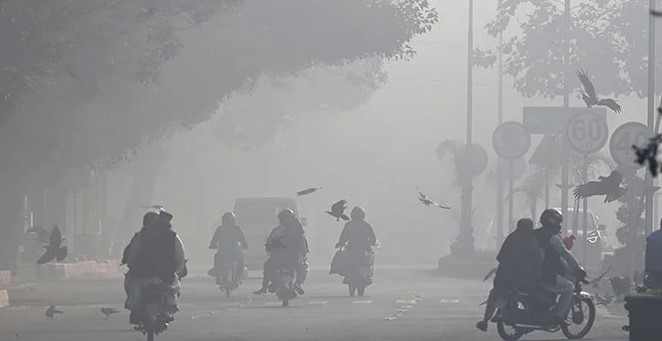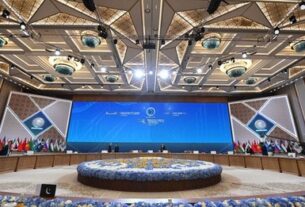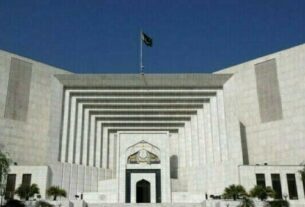1. Lahore
Lahore, a city known for its rich cultural heritage and historical significance, today holds the unfortunate title of being the most polluted city in the world. Living in Lahore has become a daily battle for survival as the air quality reaches hazardous levels. To counteract the oppressive haze, families are spending a lot of money on air purifiers, hospitals are overloaded with patients, and schools have shuttered. The direct unhealthy to dangerous levels of fog in Lahore
2. Difficulties Breathing in the City
On a scale, the Air Quality Index (AQI) rates air pollution; readings more than 300 are deemed hazardous. In certain places, Lahore’s AQI values have topped 1,000, a startling figure that makes the dreadful circumstances obvious. For comparison, AQI values between 201 and 300 are already regarded as very unhealthy.
Emissions from cars industrial operations, and the seasonal consuming of agricultural waste are the main causes of this concerning pollution. Especially in the fall and winter when wind patterns confine these pollutants near the ground, they combine to create a dense, hazardous haze.
The situation is intolerable for residents like 29-year-old teacher and asthmatic Natasha Sohail. She described her recent illness, which she attributed to the bad air quality, saying, It’s been bad I’ve been sick frequently for the past 10 days.” The symptoms of the smog continue even after she tried to lessen them with inhalers and anti-wheezing medications.
3. The impacts on Health
Smog is a public health emergency rather than just a minor annoyance. Patients with cardiovascular and pulmonary conditions are overflowing hospitals in Lahore. Tens of thousands of patients have sought care in recent weeks.
People with pre-existing medical issues, the elderly, and children are especially at risk. Due to children’s struggles with coughing, allergies, as well as other smog-related ailments, schools report significant absence rates. The kids cough all the time, complained Rafia Iqbal, a primary school teacher.
Smog is having an adverse effect on mental health in addition to physical health. Many inhabitants feel dissatisfied and powerless as a result of their inability to move freely and their ongoing health concerns.
4. Government Actions and Public Disagreement
The Punjab government has implemented a number of policies to reduce pollution in response to the situation. These include tightening down on industrial polluters, prohibiting the use of specific cars, and closing schools. Many locals, meanwhile, believe that these steps are too little, too late.
Marriyum Aurangzeb, the senior minister of Punjab, launched an anti-smog action plan that calls for closing non-compliant brick kilns, fining polluters, and giving farmers subsidized super-seeders to stop stubble burning. The quality of the air keeps getting worse in spite of these attempts.
The government’s strategy is criticized for lacking long-term vision. Preventive action ought to have been done. It happens every year stated advertising expert Muhammad Safdar. Environmental specialists stress the necessity of an all-encompassing, year-round strategy for environmental protection.
5. Air Purifiers
Air purifiers have become indispensable for those who can afford them. Mother of two Aliya Khan has spent a small fortune on air filters for her house. Not only did it cost us a fortune, but the filters also need to be changed annually, she said.
However, most families cannot afford air purifiers due to their high cost. Even schools are depending on parents to combine funds and purchase classroom purifiers.
Hassan Zaidi and other entrepreneurs have filled the void by producing reasonably priced, domestically produced air purifiers. Zaidi’s models have been popular among budget-conscious consumers because they cost Rs25,000, which is far cheaper than imported versions.
6. Economic and Environmental Difficulties
Several long-standing problems resolved in order to address Lahore’s pollution challenge. For example, one of the main causes of smog is the transportation industry. There 1.3 million automobiles and 4.5 million motorbikes on Lahore’s roads, and 1,800 more are added every day. A large number of these cars antiquated and devoid of adequate pollution controls.
Another important factor is industrial pollution. Although non-compliant factories sealed and demolished by the Punjab government, enforcement is still uneven. Additionally, assistance needed to switch to cleaner technology for brick kilns, which frequently held responsible for their smoke emissions.
Despite making up less than 4% of the smog, the agriculture industry has also drawn criticism. Although farmers who burn rice stubble frequently punished, analysts contend that concentrating on this industry takes attention away from more serious pollutants.
7. Climate diplomacy and international cooperation
Smog crosses national boundaries. About 30% of the pollution in Lahore comes from India, where similar industrial emissions and stubble burning practices also contribute to the city’s poor air quality.
Maryam Nawaz, the chief minister of Punjab, has suggested starting discussions with her Indian counterpart in recognition of this common issue. Joint initiatives to address air pollution made possible by collaborative efforts, like a regional climate conference.
Cross-border collaboration is crucial, according to Manoj Kumar, an investigator from the Finnish Institute for Investigation on Energy and Clean Air.
8. Smog to Humans
There actual accounts of pain hidden behind the data and policy discussions. Every day, residents like Khan and Sohail struggle to safeguard the health of their families. Youngsters are growing up in a world where access to clean air is an option rather than a necessity.
Businesses and schools have closed, and medical expenses have skyrocketed as a result of the smog’s negative economic effects. The cost of dealing with pollution is too much for many people.
9. Urgent Demand
Lahore’s smog problem serves as a warning to Pakistan and the surrounding area. While quick fixes can offer short-term respite, long-term work and political determination needed to achieve cleaner air.
Also Read: Israel and Gaza set to reopen truce discussions next week




